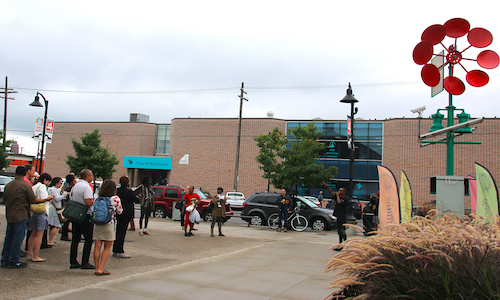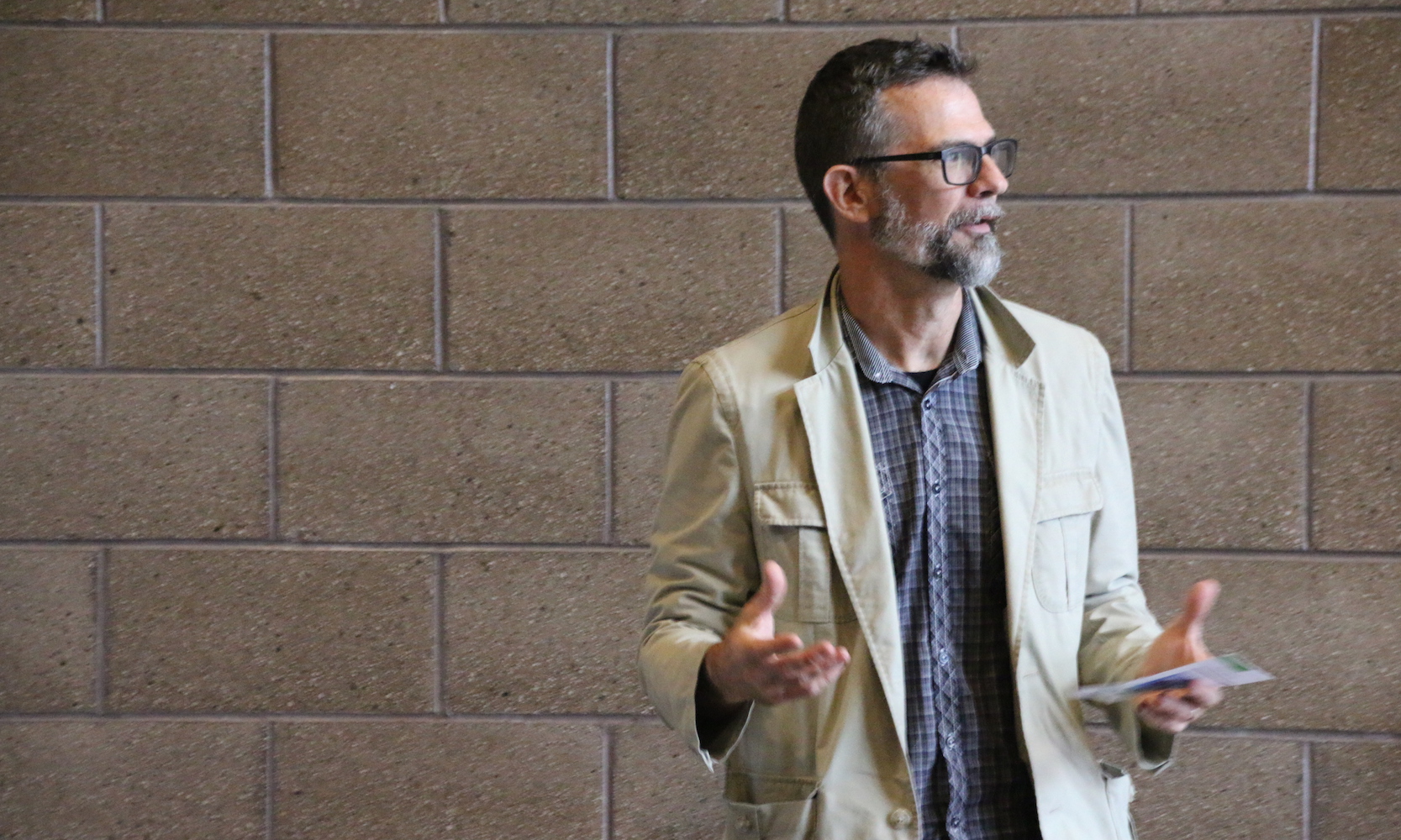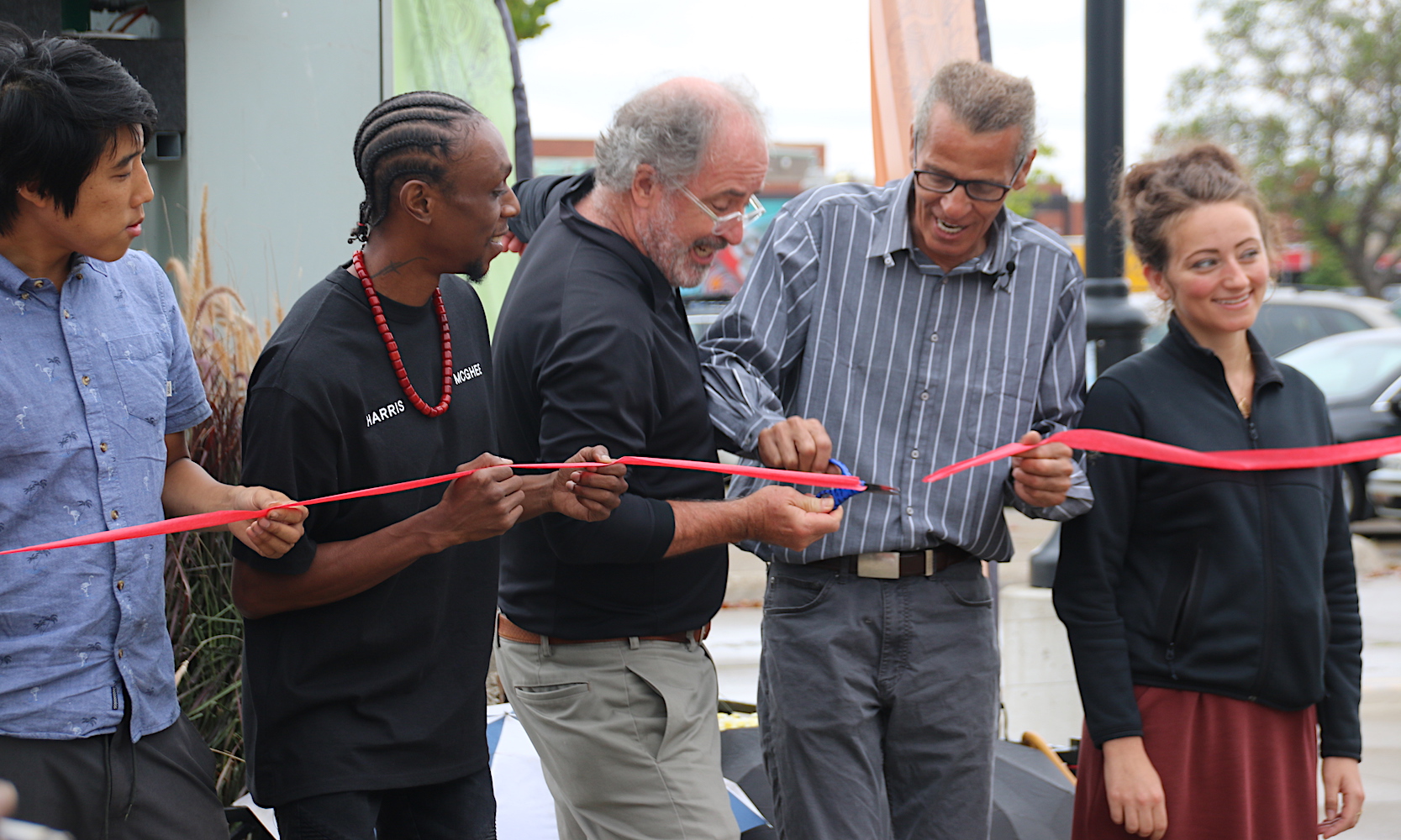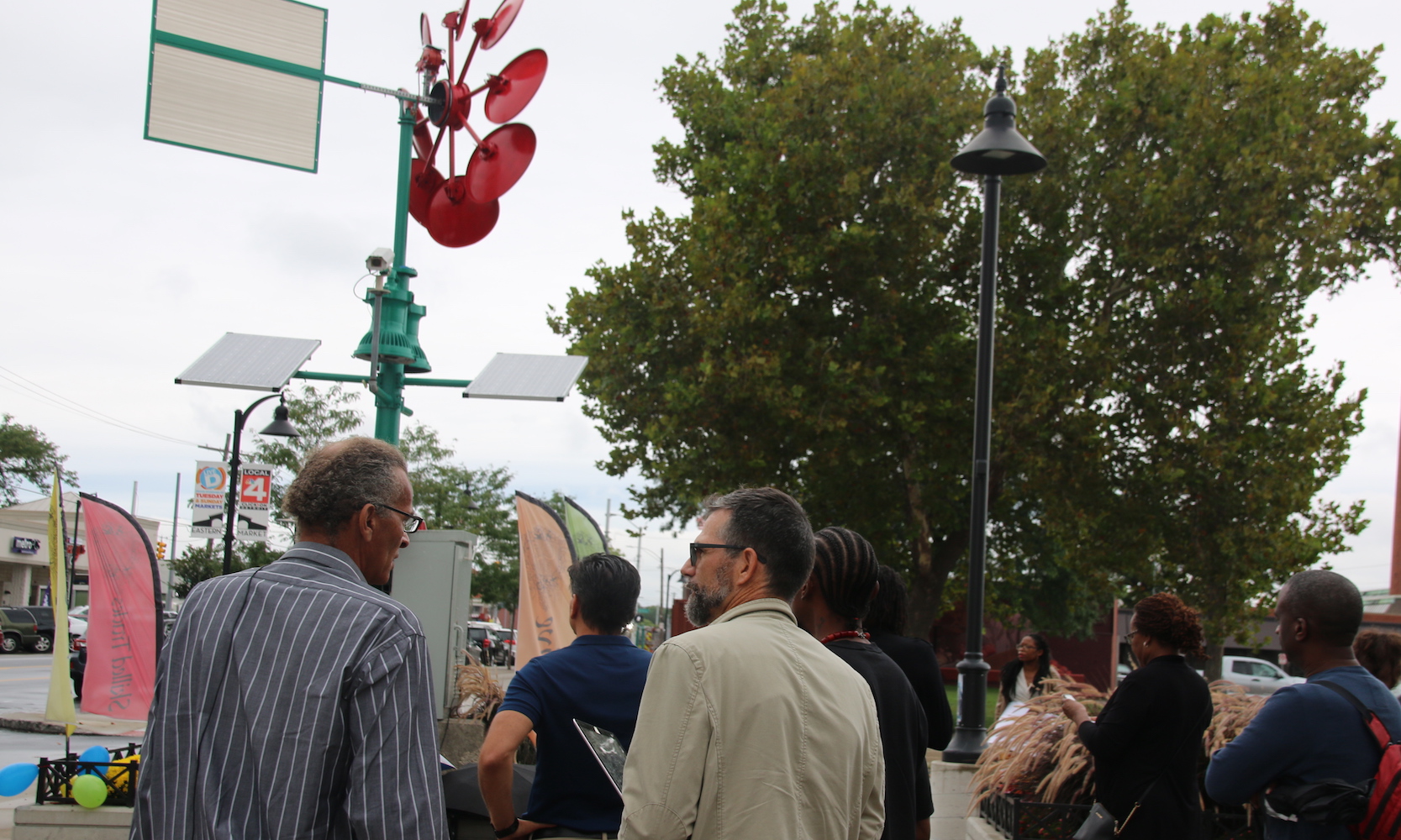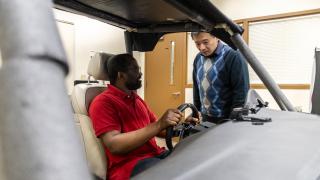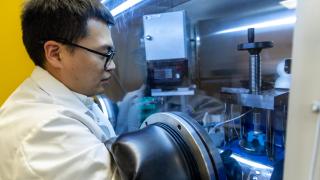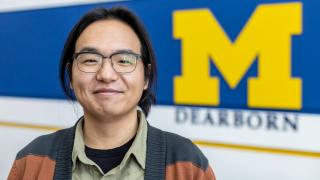
Local artist Bryce Detroit calls himself an advocate for entertainment justice. And if you walked by Eastern Market’s Shed No. 5 earlier this month, you’d get why.
He was riffing on sustainability, creativity and collaboration.
Appropriate topics given his microphone and speaker system were powered by a wind turbine…which was fueled by the ingenuity of Detroit resident Carl Nielbock … who was empowered in part through the efforts of UM-Dearborn faculty.
Bryce Detroit’s performance was the first of many events the self-powering entertainment station will support. There’s even a use for those who aren't looking to speak on it: The turbine, affectionately referred to as the Detroit Windmill by Nielbock, will power wireless internet servers and USB-port charging stations for public use.

